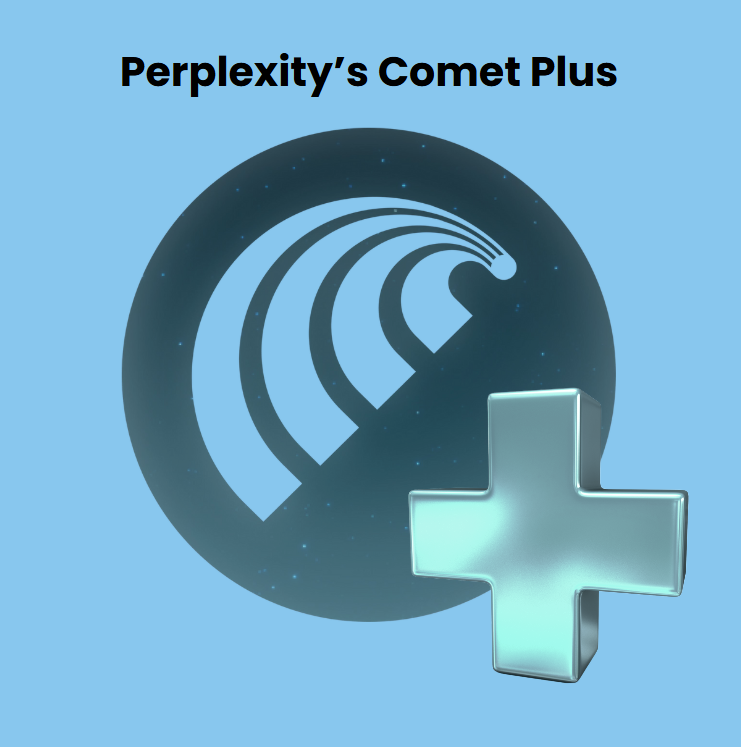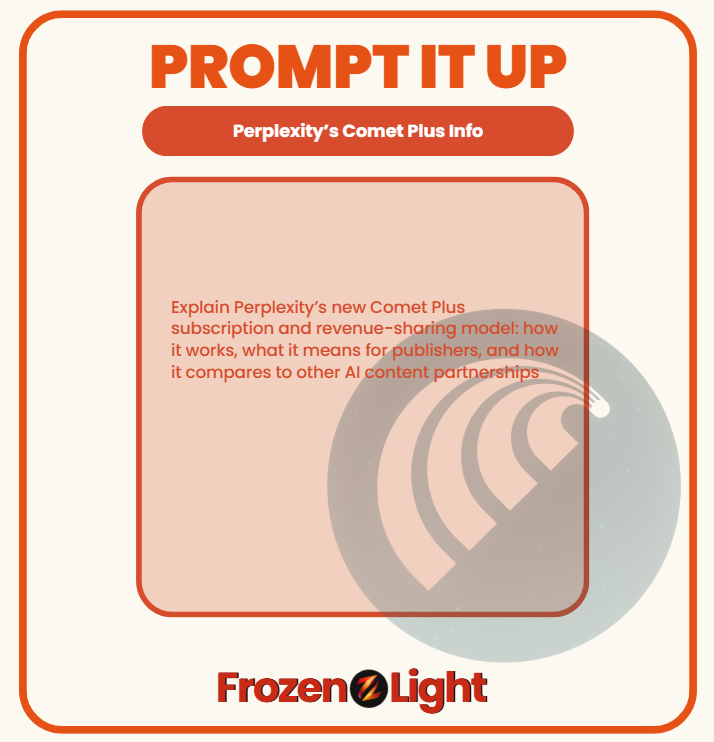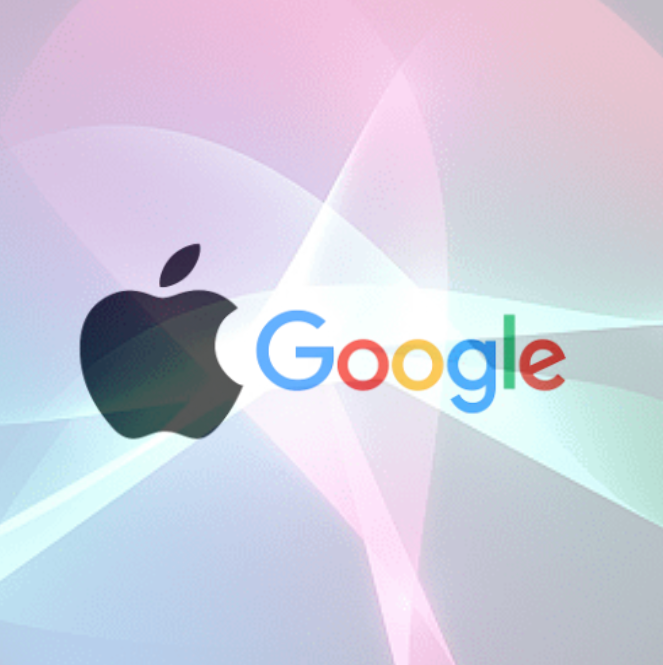
Perplexity has launched Comet Plus, a new $5/month standalone subscription - also included in its Pro and Max tiers - which grants users access to premium content from trusted publishers and journalists.
The subscription revenue feeds a $42.5 million revenue-sharing program, with 80% allocated to publishers and 20% retained by Perplexity.
What is Perplexity saying?
In its blog post, Perplexity states: “Comet Plus transforms how publishers are compensated in the AI age… it’s time for a business model to ensure that publishers and journalists benefit from their contributions to a better internet.”
CEO Aravind Srinivas told Bloomberg: “AI is helping to create a better internet, but publishers still need to get paid… we think this is actually the right solution, and we’re happy to make adjustments along the way.”
What it means (in human words)?
Simply put, Perplexity is launching a new browser offering - Comet Plus - that shows users premium journalism. When you read or interact with that content via Perplexity, the publisher gets paid - 80% of your subscription - so it's a win-win: you read, they earn.
It’s Perplexity’s way of turning content-sharing into a fair deal, instead of the old click-and-scroll model that often leaves publishers undervalued.
Connecting the dots
The move comes amid rising legal pressure: Perplexity faces lawsuits from News Corp.-owned outlets like Dow Jones and the New York Post, plus cease-and-desist letters from Forbes and Condé Nast.
This program replaces Perplexity’s earlier ad-based Publishers Program and aligns it more squarely with a usage-based compensation model-getting paid when and how content is consumed in the AI era.
The strategy also follows broader industry trends: OpenAI, Google, and others have signed licensing deals, but Perplexity is among the first to reward publishers directly based on AI usage of their content.
Bottom line
Pricing:
- $5/month standalone for Comet Plus.
- Also included in Perplexity Pro ($20/mo) and Max ($40/mo) tiers.
Pros
- Fairer model: 80% of subscription revenue goes directly to publishers.
- Premium content access: users get ad-free articles from trusted sources.
- Legal hedge: shows proactive effort amid lawsuits and copyright scrutiny.
- Industry leadership: one of the first AI firms to implement usage-based revenue sharing.
Cons
- Limited scope at launch: only participating publishers benefit.
- User adoption uncertain: will enough people pay $5 when free AI answers exist?
- Revenue scale: $42.5M fund is significant, but small compared to what major publishers earn from ads or licensing.
- Publisher trust gap: skepticism remains about AI firms using content without consent.
Prompt It Up
“Explain Perplexity’s new Comet Plus subscription and revenue-sharing model: how it works, what it means for publishers, and how it compares to other AI content partnerships.”Frozen Light Team Perspective
Perplexity’s Comet Plus program is an important signal in the ongoing struggle to define fair value exchange between AI platforms and content creators. On the surface, allocating 80% of subscription revenue to publishers appears generous, but the initiative raises deeper questions.
First, scale remains uncertain. A $5/month subscription model - even with integration into higher tiers - may not generate enough volume to materially offset the structural decline in digital advertising revenue that publishers face. For major newsrooms, the sums involved are likely modest compared to licensing agreements negotiated with companies like OpenAI or Google.
Second, the program’s sustainability depends on both user adoption and publisher participation. Consumers have been conditioned to expect free information, while publishers may remain cautious about entering into revenue-sharing arrangements with platforms currently facing lawsuits over unauthorized data use.
Finally, while Comet Plus is a step toward addressing criticism, it does not resolve the core tension: AI platforms fundamentally rely on ingesting vast amounts of publisher content to generate answers - often reducing the need for users to click through to original sources. Revenue-sharing helps, but it may not be sufficient to rebuild trust or create a durable economic model for journalism in the AI era.
In that sense, Comet Plus is less a solution than an experiment - one that will be closely scrutinized by the industry. If it succeeds, it could become a precedent for balancing innovation with accountability. If it fails, it risks reinforcing publisher skepticism that AI firms are offering symbolic concessions rather than structural reform.








